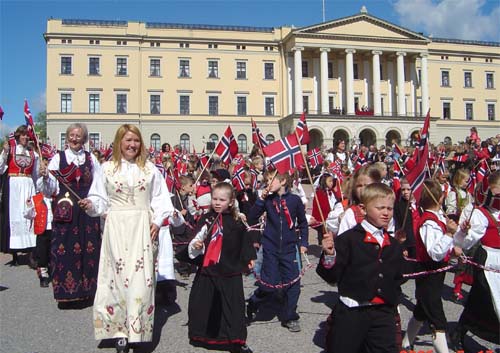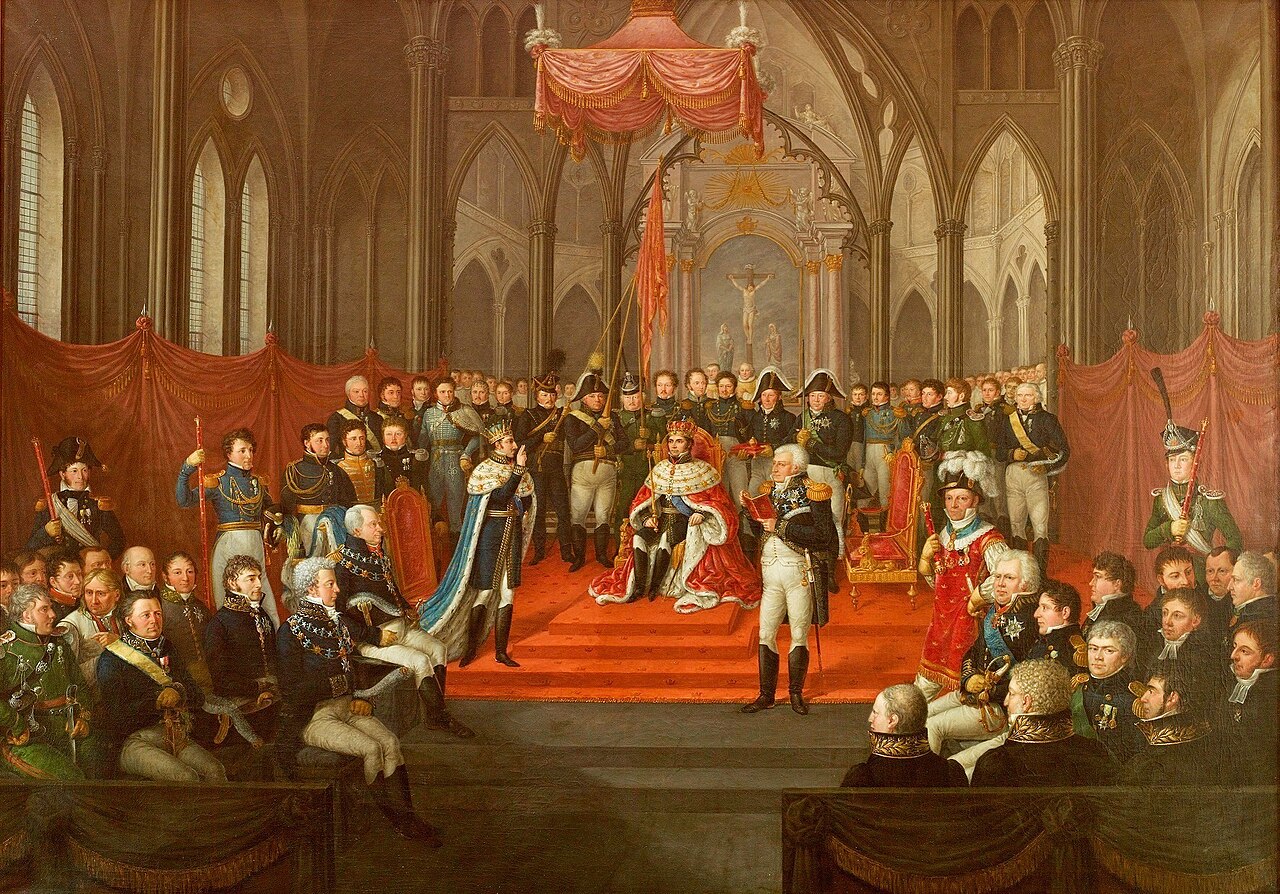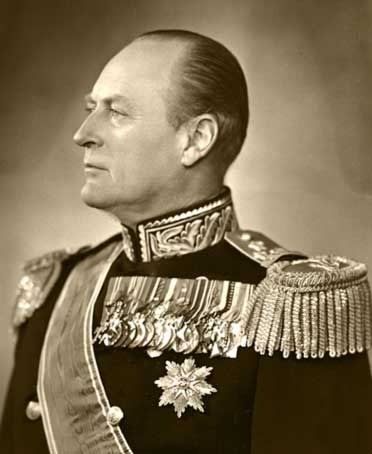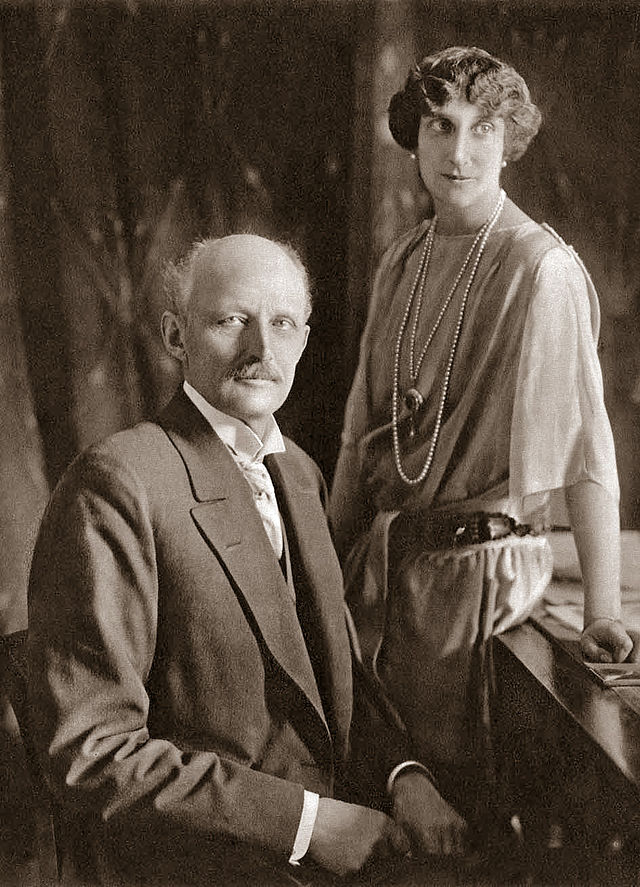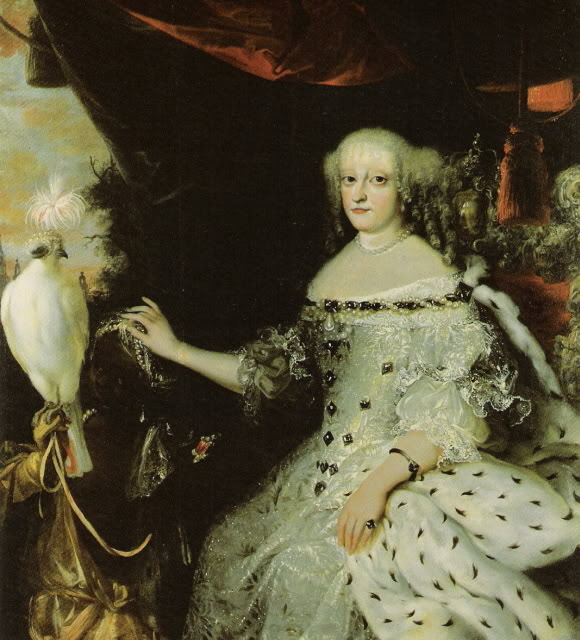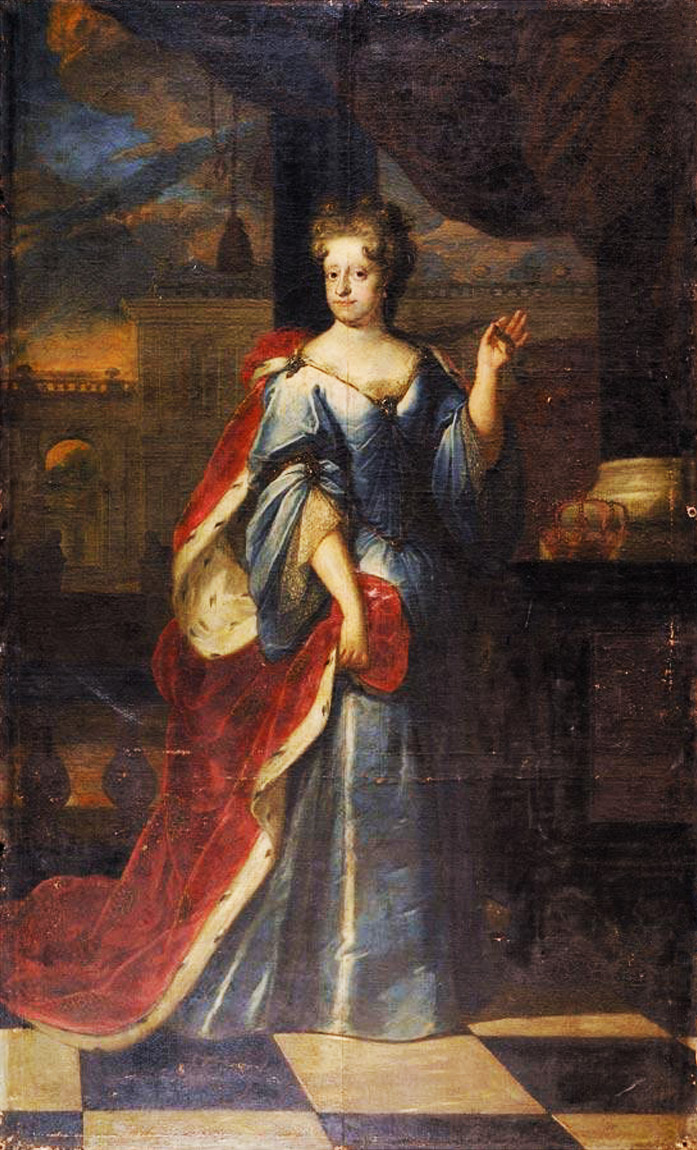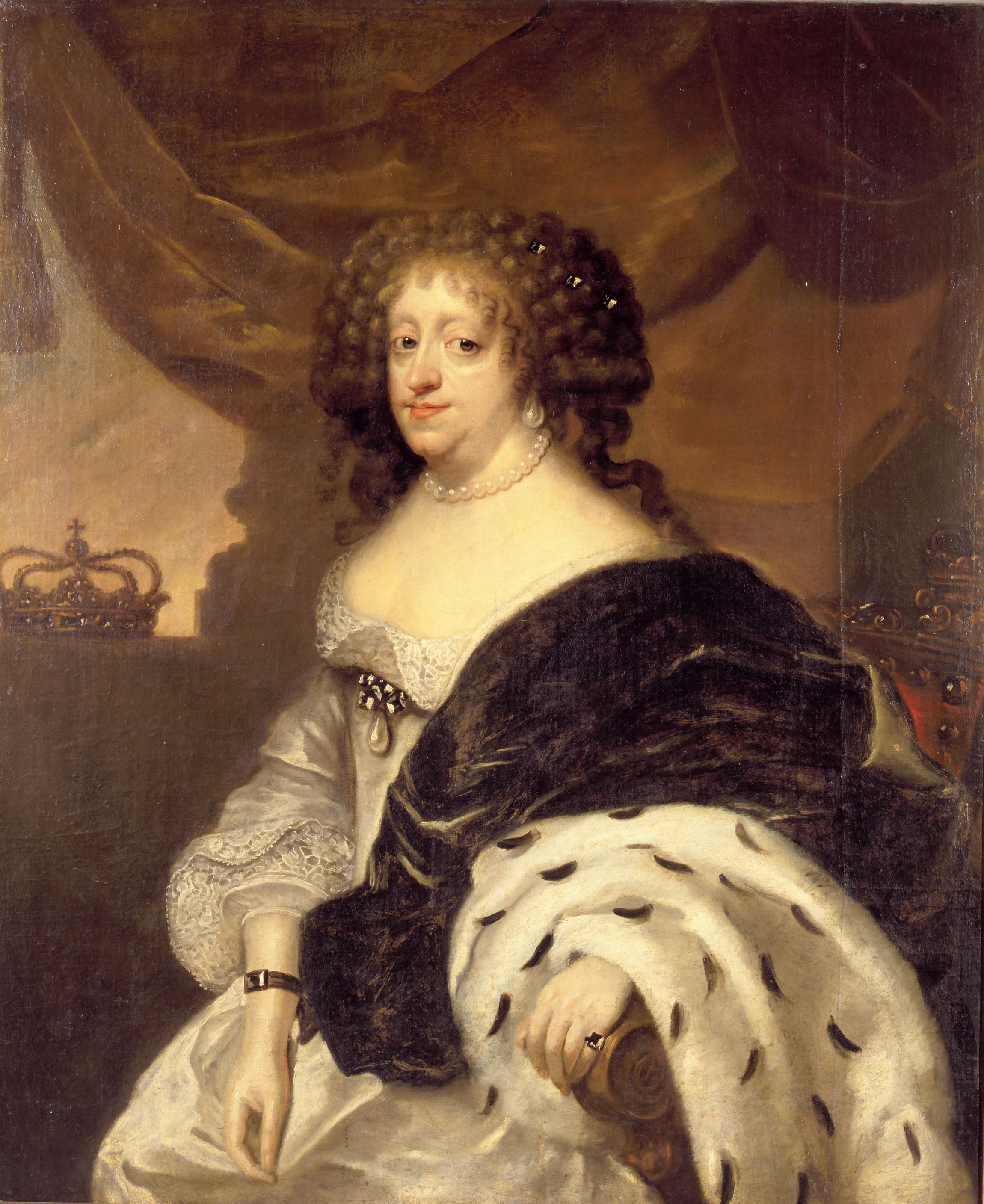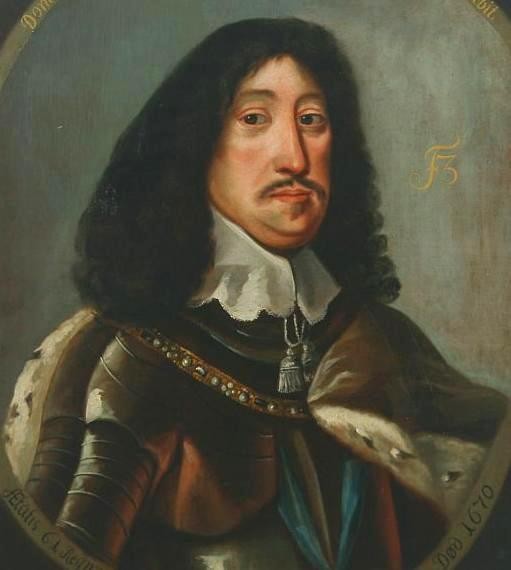by Susan Flantzer
© Unofficial Royalty 2024

Nobel Peace Prize Laureate President Barack Obama delivers his Nobel Lecture during the Nobel Peace Prize Ceremony at Olso City Hall on December 10, 2009. Seated in the chairs on the right are King Harald V, Queen Sonja, Crown Princess Mette-Marit, and Crown Prince Haakon; Credit – Wikipedia from The Official White House Photostream
On December 10th of each year, the anniversary of Alfred Nobel’s death in 1896, the Chairperson of the Norwegian Nobel Committee presents the Nobel Peace Prize at the Oslo City Hall in Oslo, Norway. Each recipient, known as a laureate, receives an 18-carat green gold medal plated with 24-carat gold, a diploma, and a monetary award. In attendance are the Norwegian Monarch, his/her spouse, members of the Norwegian royal family, officials of the Norwegian government, representatives of the Storting (the Norwegian legislature), and an invited audience. Later the same day, the Norwegian Nobel Committee hosts a banquet in honor of the Nobel Peace Prize laureate(s) also attended by the Norwegian royal family.
*********************
Who was Alfred Nobel?
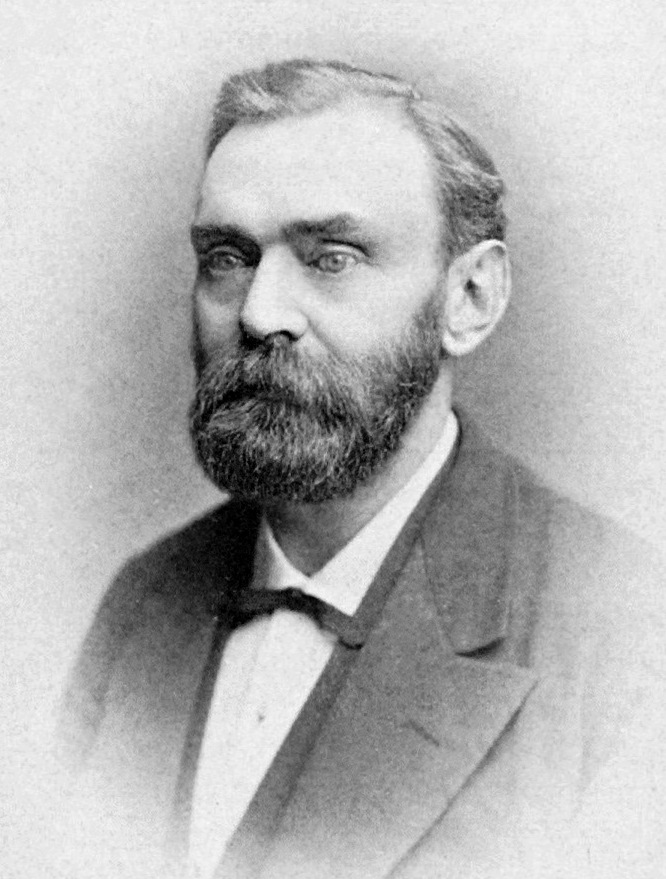
Alfred Nobel; Credit – Wikipedia
Alfred Nobel (1833 – 1896) was a Swedish chemist, inventor, engineer, and businessman, known for inventing dynamite. His invention of dynamite in 1866 was developed with the idea of using it for mining, not for war. However, just four years later, dynamite was used by the Prussians and the French in the Franco-Prussian War (1870 – 1871). In 1891, Nobel commented about his dynamite factories, “Perhaps my factories will put an end to war sooner than your congresses: on the day that two army corps can mutually annihilate each other in a second, all civilized nations will surely recoil with horror and disband their troops.” Alfred Nobel died in 1896, so he was not alive during World War I to see how wrong his idea was.

Nobel’s friend Countess Bertha von Suttner; Credit – Wikipedia
In 1876, Austro-Bohemian Countess Bertha von Suttner became Nobel’s secretary. She left the position after a short time to marry but corresponded with Nobel until he died in 1896. During the 1880s, von Suttner began developing pacifist ideas, ideas her friend Nobel was also considering due to the effects of more powerful weapons. In 1889, von Suttner became a leading figure in the peace movement when her pacifist novel, Die Waffen Nieder! (Lay Down Your Arms!) was published. It is believed that von Suttner had a major influence on Nobel’s decision to include a peace prize among the prizes provided in his will. Bertha von Suttner was awarded the Nobel Peace Prize in 1906 “for her audacity to oppose the horrors of war.”
On December 10, 1896, 63-year-old Alfred Nobel died in his villa in San Remo, Italy, from a cerebral hemorrhage. In his will, Nobel left instructions that his fortune be used to create a series of prizes for those who develop the “greatest benefit on mankind” in physics, chemistry, physiology, medicine, literature, and peace. Nobel bequeathed 94% of his total assets to establish the five Nobel Prizes. A sixth prize for Economic Sciences, endowed by Sweden’s central bank, Sveriges Riksbank, was first presented in 1969.
*********************
The Nobel Peace Prize
Nobel Peace Prize Laureate Malala Yousafzai displays her medal and diploma during the Nobel Peace Prize awards ceremony at the City Hall in Oslo, Norway, on December 10, 2014
Alfred Nobel’s will states that the Peace Prize shall be given “to the person who shall have done the most or the best work for fraternity between nations, for the abolition or reduction of standing armies and for the holding and promotion of peace congresses.” Nobel’s will further state that the Nobel Peace Prize laureate will be selected by the Norwegian Nobel Committee, a five-member committee appointed by the Storting (the Norwegian legislature). Sweden administers the other Nobel Prizes. Why the Swedish Alfred Nobel decided that Norway should administer the Peace Prize is unclear. When Nobel died in 1896, Norway and Sweden were still the United Kingdoms of Sweden and Norway with Sweden in charge of foreign policy. There is speculation that Nobel may have considered Norway better suited to awarding the Peace Prize because it did not have the same militaristic traditions as Sweden.
Each year, the Norwegian Nobel Committee invites eligible people to submit nominations for the Nobel Peace Prize. According to the statutes of the Nobel Foundation those eligible to submit nominations are:
- Members of national assemblies and governments and members of the Inter-Parliamentary Union
- Members of the Permanent Court of Arbitration and the International Court of Justice at the Hague
- Members of Institut de Droit International
- Academics at the professor or associate professor level in history, social sciences, philosophy, law, and theology, university rectors, university directors (or their equivalents), and directors of peace research and international affairs institutes
- Previous recipients, including board members of organizations that have received the prize
- Present and past members of the Norwegian Nobel Committee
- Former permanent advisers to the Norwegian Nobel Institute
Unlike the Nobel Prizes, the Peace Prize is occasionally awarded to an organization.
*********************
Nobel Peace Prize Ceremonies and Events
The Nobel Peace Prize Ceremony takes place at Oslo City Hall in Oslo, Norway on December 10th of each year, the anniversary of Alfred Nobel’s death. The Chairman of the Norwegian Nobel Committee presents the Nobel Peace Prize in the presence of the Norwegian monarch and the Norwegian royal family.
Several ceremonies occur on December 10 which Norwegian royal family members may attend.
Save the Children Peace Prize Party in 2015. Crown Princess Mette-Marit and her son Prince Sverre Magnus are on the right
- Save the Children Peace Prize Party
- December 10 at 11:00 AM
- Location: Nobel Peace Center
The Save the Children Peace Prize Party is a show made by and for children with representatives of the Nobel Peace Prize laureate(s) as guests of honor. Children from 5th, 6th, and 7th grade are in the audience.
2023 Nobel Peace Prize Ceremony. King Harald V, Queen Sonja, Crown Princess Mette-Marit, and Crown Prince Haakon sit in the four chairs in the aisle.
- Nobel Peace Prize Award Ceremony
- December 10 at 1:00 PM – 2:30 PM
- Location: Oslo City Hall
The ceremony starts with musical performances, followed by the speech of the Chairman of the Norwegian Nobel Committee. The Nobel Peace Prize laureate(s) receive their diploma and gold medal from the Chairman of the Norwegian Nobel Committee in the presence of the Norwegian monarch and the Norwegian royal family, and then they give their Nobel Lectures.

Torchlight procession from Oslo Central Station to the Grand Hotel in 2023; Credit – Wikipedia by Kimberli Mäkäräinen
- Torchlight Procession
- December 10 at 6:00 PM – 7:00 PM
- Location: Oslo Central Station to the Grand Hotel
The torchlight procession, organized by the Norwegian Peace Council, starts at Oslo Central Station and ends in front of the Grand Hotel, where the Nobel Peace Prize laureate(s) greet the parade from the Grand Balcony of the Nobel Suite.
2009 Nobel Peace Prize Laureate Barack Obama and his wife Michelle Obama wave from the Grand Balcony of the Nobel Suite at the Grand Hotel.
Left to Right: Crown Prince Haakon, Queen Sonja, Ali Rahmani, Kiana Rahmani, King Harald V, Crown Princess Mette Marit, and Taghi Rahmani arrive at the Nobel Banquet on December 10, 2023. The 2023 Nobel Peace Prize winner Narges Mohammadi was imprisoned and was represented by her 17-year-old twin children and her husband, who live in exile in Paris. Narges Mohammadi received the 2023 Nobel Peace Prize for her fight against the oppression of women in Iran and the fight for human rights and freedom for all.
- The Nobel Banquet
- December 10 at 7:30
- Location: Grand Hotel
More than 200 guests attend the Nobel Banquet at The Grand Hotel in Oslo. Seated with the laureate(s) are the Norwegian monarch and his/her spouse the President of the Storting, the Prime Minister, and members of the Nobel Committee. Other guests usually include the Crown Prince or the Crown Princess and his/her spouse, government ministers, members of the Storting, and representatives of public institutions, non-profit organizations, and cultural and commercial life.
This article is the intellectual property of Unofficial Royalty and is NOT TO BE COPIED, EDITED, OR POSTED IN ANY FORM ON ANOTHER WEBSITE under any circumstances. It is permissible to use a link that directs to Unofficial Royalty.
Works Cited
- Bertha von Suttner. (2022). Wikipedia. https://en.wikipedia.org/wiki/Bertha_von_Suttner
- Bidragsytere til Wikimedia-prosjektene. (2004). svensk kjemiker, ingeniør, oppfinner og filantrop. Wikipedia.org; Wikimedia Foundation, Inc. https://no.wikipedia.org/wiki/Alfred_Nobel
- Nobels Fredspris. (2021). Wikipedia. https://no.wikipedia.org/wiki/Nobels_fredspris
- Press Program for the Nobel Peace Prize Events 2023 – Nobel Peace Prize. (2023). Www.nobelpeaceprize.org. https://www.nobelpeaceprize.org/press/press-releases/press-program-for-the-nobel-peace-prize-events-2023
- Royen, Ulrika. (2021). The Nobel Prize Award Ceremonies and Banquets – NobelPrize.org. NobelPrize.org. https://www.nobelprize.org/ceremony/the-nobel-prize-award-ceremonies-and-banquets/
- Royen, Ulrika. (2024). The Nobel Peace Prize Award Ceremony 2024 – NobelPrize.org. NobelPrize.org. https://www.nobelprize.org/ceremony/the-nobel-peace-prize-award-ceremony-2024/
- Wikipedia Contributors. (2019). Alfred Nobel. Wikipedia; Wikimedia Foundation. https://en.wikipedia.org/wiki/Alfred_Nobel
- Wikipedia Contributors. (2019). Nobel Peace Prize. Wikipedia; Wikimedia Foundation. https://en.wikipedia.org/wiki/Nobel_Peace_Prize





